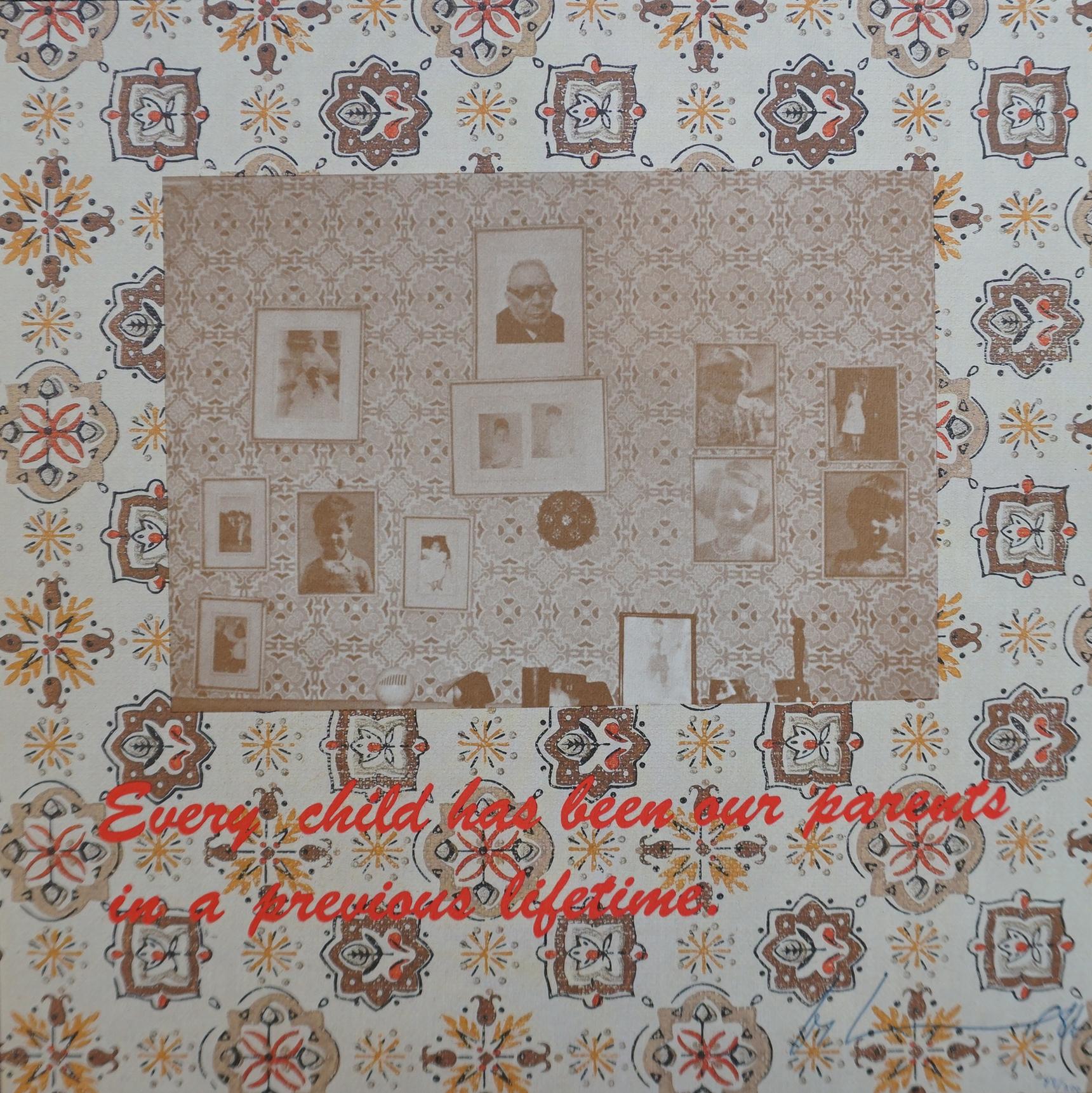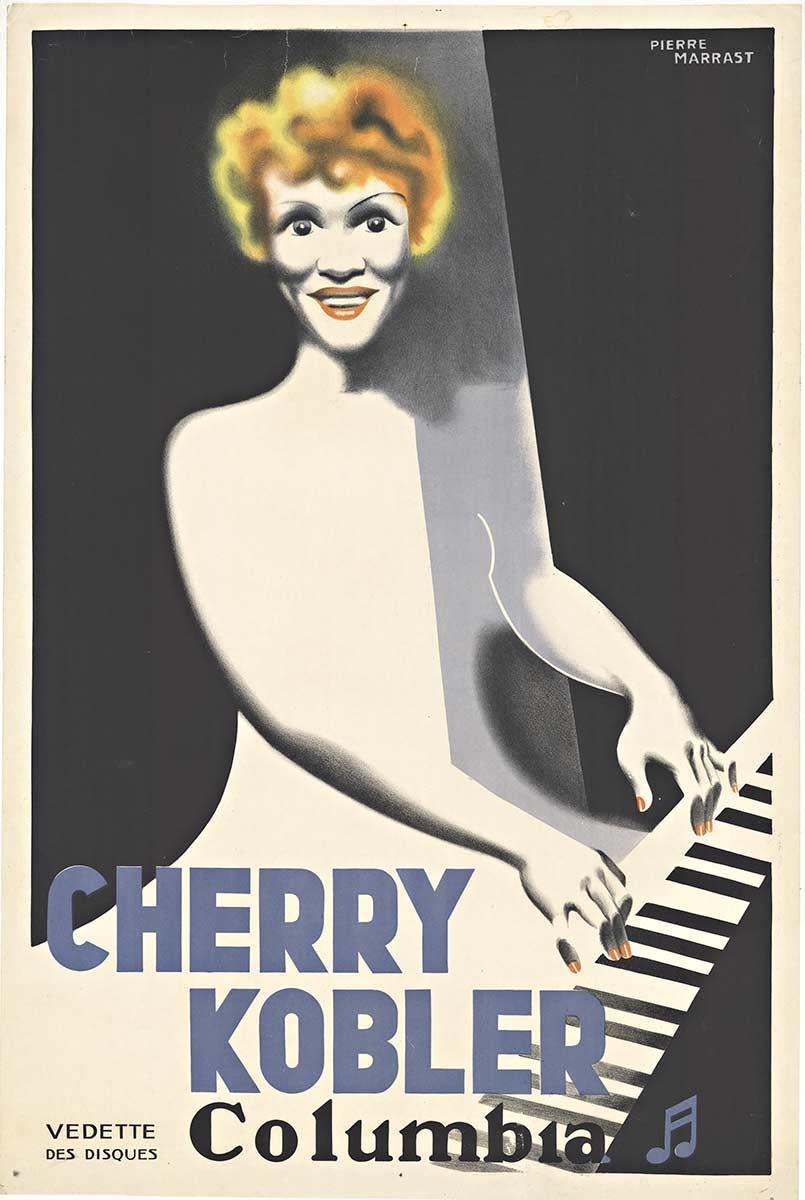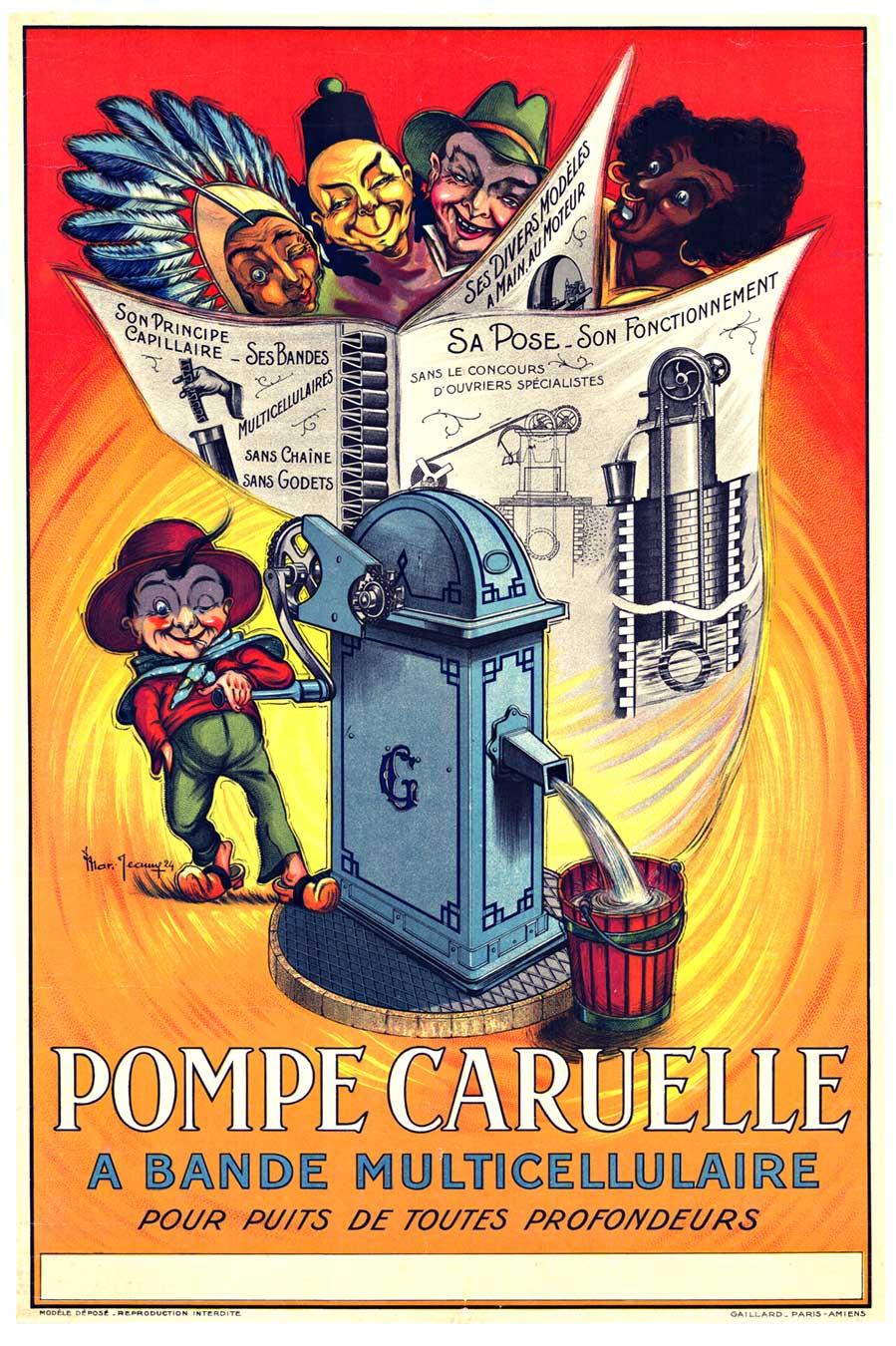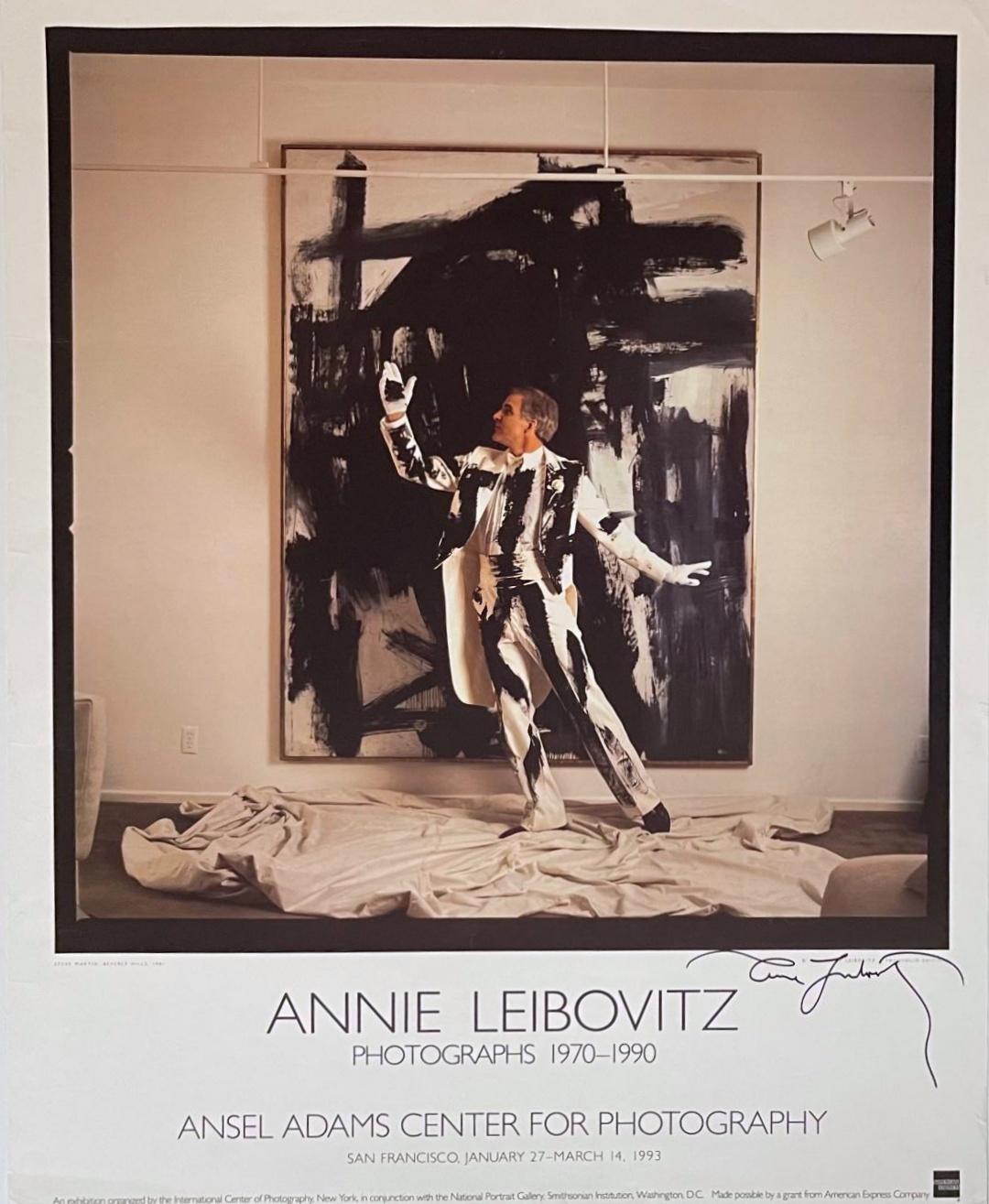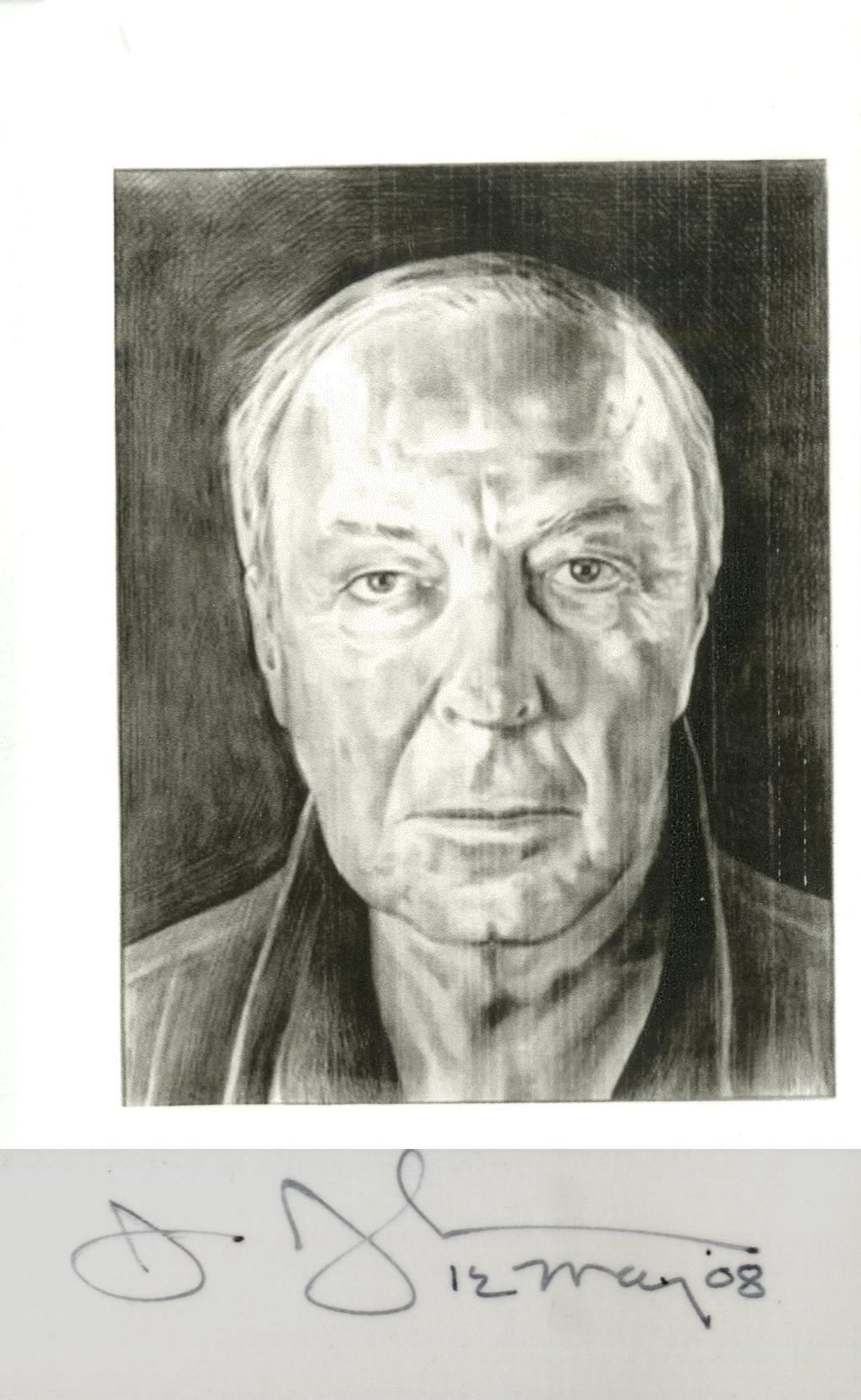Items Similar to Stripes from the House of the Shaman (Rare poster, Hand Signed by Joseph Beuys)
Want more images or videos?
Request additional images or videos from the seller
1 of 8
Joseph BeuysStripes from the House of the Shaman (Rare poster, Hand Signed by Joseph Beuys)1980
1980
About the Item
Joseph Beuys
Stripes from the House of the Shaman (Hand Signed), 1980
Offset lithograph hand signed by Joseph Beuys
Boldly signed on the recto in graphite pencil by Joseph Beuys
Published by: Anthony D'Offay Gallery, London
Frame included: held in original vintage frame
From the estate and collection of artist Tom Levine. Very rare when hand signed as is the present work. Vintage frame is included with this work. (see other photos)
Measurements:
Framed: 32.5 inches (vertical) by 24 inches (horizontal) by 1 inch (depth)
Print: 28.5 inches (vertical) by 19.5 inches (horizontal)
More about Joseph Beuys:
Joseph Beuys, who is recognized as one of the most influential artists of the postwar period, had a grand and ambitious goal for his work: the transformation of Western culture into a more peaceful, democratic, and creative milieu. His multifaceted career, which included sculpture, performance, lectures, activism, and even a campaign for elected office, were all part of an “expanded concept of art” that was aimed at advancing his utopian vision. In all its forms, his work is dense and highly allusive and draws on much of the accumulated knowledge of Western civilization, including history, religion, natural sciences, economic theory, and myth. A charismatic teacher, Beuys was mentor to a generation of younger artists who were inspired by his passionate fusion of art, life, and activism.
Service in World War II
Beuys was born in Krefeld, Germany, and as a youth pursued dual interests in art and the natural sciences. In 1940, at age 19, he joined the German air force. During his 5 years of service, he was wounded several times and interned in a British prisoner-of-war camp. He returned home in 1945 physically and emotionally depleted, and spent nearly a decade recuperating on a friend’s farm, where he made hundreds of drawings and small sculptures. Coming to terms with his involvement in World War II would be a lifelong process that informed much of his art.
Teaching at the Düsseldorf Art Academy, Sled
After the war, Beuys decided to dedicate himself to art. In 1961, he was appointed to a professorship at the Düsseldorf Art Academy and soon became the school’s most sought-after teacher. At the same time, he began to develop his sculptural practice. One of his best-known works from this period is Sled (1969), which he called a “survival kit”: an elemental means of transport carrying a felt blanket, a lump of fat, and a flashlight. Sled alludes to Beuys’s oft-repeated story of crashing his warplane during a blizzard and being rescued by Tatar nomads, who treated his wounds with fat and wrapped him in felt to keep him warm. Whether true or not, the story is a powerful metaphor for the rebirth of both an individual and a nation after the horrors perpetrated by National Socialism.
I Like America and America Likes Me
Beuys was also a performer who was renowned for his “actions”—heavily symbolic events that illustrated his evolving ideas about how art could play a wider role in transforming society. The best known of these is I Like America and America Likes Me (1974), in which he spent several days with a coyote in a New York gallery space. Described as a “dialogue” with the animal, the performance presented Beuys as a shaman—a spiritual leader and healer who has a special affinity with animals—who traveled to the United States to enact a symbolic reconciliation between modern American society, the natural world, and Native American culture. To emphasize the urgent need for healing these rifts, Beuys had himself transported to and from the gallery in an ambulance.
“Everyone is an artist,” Political Activism, 7000 Oaks
During the 1970s, Beuys focused much of his energy on political activism, helping to found such groups as the German Student Party, the Free International University, and the Green party, whose goals included worldwide disarmament, educational reform, and environmental stewardship. His well-known slogan, “Everyone is an artist,” was meant to suggest that social transformation could be achieved if every human being applied his or her creative energies toward positive change in cooperative activities he called “social sculptures.” His most famous of these was 7000 Oaks (1982), a massive reforestation project in which seven thousand trees were planted throughout Germany, particularly in areas destroyed by bombing during World War II. In 1997, in homage to his idea, the Walker Art Center oversaw the planting of more than 1,000 young trees in Cass Lake, St. Paul, and the Minneapolis Sculpture Garden.
Recognition and Legacy
Beuys’s work has been collected and shown widely in Europe and the United States, with major retrospectives mounted by the Guggenheim Museum (1979) and Tate Modern (2005), among others. Large collections of his multiples are held by several American institutions, including the Walker Art Center and the Broad Art Foundation in Los Angeles. In 1986, Beuys was awarded the Wilhelm Lehmbruck Prize by the city of Duisburg, Germany.
While the success of Beuys’s ambitious program has been the subject of much debate, his enormous influence on the development of postwar art is undeniable. His exploration of sculptural form and materials, his mesmerizing performances, and his ideas about the powerful potential of consciously applied creativity are still catalytic forces in the art world.
-Courtesy of the Walker Art Center
- Creator:Joseph Beuys (1921 - 1986, German)
- Creation Year:1980
- Dimensions:Height: 32.5 in (82.55 cm)Width: 24 in (60.96 cm)Depth: 1 in (2.54 cm)
- Medium:
- Movement & Style:
- Period:
- Condition:Held in the original vintage frame; ships framed.
- Gallery Location:New York, NY
- Reference Number:1stDibs: LU1745213680172
About the Seller
5.0
Platinum Seller
These expertly vetted sellers are 1stDibs' most experienced sellers and are rated highest by our customers.
Established in 2007
1stDibs seller since 2022
289 sales on 1stDibs
Typical response time: 1 hour
- ShippingRetrieving quote...Ships From: New York, NY
- Return PolicyA return for this item may be initiated within 1 day of delivery.
More From This SellerView All
- Poster: Photographs 1970-1990 with Steve Martin (Hand signed by Annie Leibovitz)By Annie LeibovitzLocated in New York, NYAnnie Leibovitz Photographs 1970-1990 (Hand signed by Annie Leibovitz), 1993 Offset lithograph poster (hand signed) Boldly signed in black marker on the front 30 × 24 inches Ansel Adams Center for Photography, San Francisco in collaboration with the National Portrait Gallery, Smithsonian Institution Unframed This offset lithograph poster was published on the occasion of the Annie Leibovitz' 1993 survey exhibition at the Ansel Adams Center for photograph in San Francisco. The photograph of course depicts the actor and renowned art collector Steve Martin in front of a Franz Kline painting entitled Rue, which Martin apparently once owned. Steve Martin was said to have always wanted to be part of the painting; Complete with black brushstrokes on his white suit, Martin realized his dream and posed for Leibowitz in front of Rue. (Of course the irony is that Martin cuts a gleeful, almost clownish pose in front of a painting, Rue, whose very name means sorry and regret. Perhaps Martin will rue the day he sold this Franz Kline!) A companion photo appeared on the cover of Rolling Stone magazine. The Portland Art Museum also exhibited the photo Annie Leibovitz took of Steve Martin in Beverly Hills when he posed for his portrait. A coveted poster when hand signed by Annie Leibovitz Provenance: Collection of former Trustee of the Portland Museum of Art Annie Leibovitz Biography: Born in 1949, Annie Leibovitz graduated from the San Francisco Art Institute in 1971. Photos she took during college while living on a kibbutz in Israel and working to uncover the remains of King Solomon’s Temple helped land her a job at Rolling Stone magazine, where she was quickly named chief photographer. Between photographing John Lennon and documenting the Rolling Stones’ 1975 concert tour, Liebovitz reinforced her reputation as the most prominent celebrity photographer of her generation. In 1983, she moved to Vanity Fair, where she broadened her range of subjects from rock stars to other public figures like the Dalai Lama. In 1991, Leibovitz became only the second living photographer to be featured in an exhibit at the National Portrait Gallery. Overview and Early Life For decades, Annie Leibovitz and her camera have exposed to the public eye subtleties of character in rock stars, politicians, actors, and literary figures that lay beneath their celebrity personae. Her work first fueled the American fascination with rock ’n’ roll dissidents in the 1970s and then, in the 1980s and 1990s, captured the essence of the day’s great cultural icons. Her photographs make plain that, as Leibovitz herself once put it, she was not afraid to fall in love with her subjects. Anna-Lou Leibovitz was born on October 2, 1949, in Westbury, Connecticut. She was the third of six children of Marilyn Leibovitz, a modern dance instructor, and Sam Leibovitz, an air force lieutenant colonel. As the daughter of a career military officer, Leibovitz moved with her family frequently from town to town. The constant relocation fostered strong ties among the six Leibovitz children. Education and Work with Rolling Stone Leibovitz attended the San Francisco Art Institute from 1967 until 1971. She shifted her focus from painting to photography early in her college career. In 1969, she lived on Kibbutz Amir in Israel. The archaeological team on which she worked during her five months in Israel uncovered the remains of King Solomon’s Temple. By the time Leibovitz received her bachelor of fine arts degree in 1971, her photographs of Israel and a picture of the poet Allen Ginsberg at a San Francisco peace march had already landed her a job at the music magazine Rolling Stone. Soon after she was hired, Leibovitz convinced editor Jann Wenner to grant her a breakthrough assignment. Leibovitz flew with Wenner to New York City to interview John Lennon. A photo from that trip adorned the cover of Rolling Stone, the first of dozens Leibovitz would shoot over the course of her career with the music magazine. In 1973, she was named chief photographer. The mid-1970s brought Leibovitz an increasing amount of notoriety and its concomitant tribulations. In 1975, the rock band the Rolling Stones invited Leibovitz to document their six-month concert tour. Living in the world of her subjects, her camera did not shield Leibovitz from the rock ’n’ roll life-style. She began using cocaine on tour and struggled for years afterward to recover. Photography Exhibits and Move to Vanity Fair In 1983, Leibovitz put together her first major exhibit, which led to the publication of her book Annie Leibovitz: Photographs (1983). Her ability to work with her subjects to get beneath the veneer of superficiality that typically characterizes Hollywood paparazzi has reinforced her reputation as the most prominent celebrity photographer of her generation. The rapport Leibovitz develops with her subjects creates an atmosphere in which celebrities will strike the most unconventional of poses and show emotions that other photographers could not evoke. Among her most famous shots are a naked John Lennon curled around a fully clothed Yoko Ono, Bette Midler in a bed of roses, and the Blues Brothers painted blue. In 1983, after more than a decade of photographing such rock ’n’ roll legends as Lennon, Bob Dylan, Stevie Wonder, and Bruce Springsteen, Leibovitz left Rolling Stone for Vanity Fair. This move gave her the opportunity to shoot a broader range of subjects, including the Dalai Lama, Vaclav Havel, and Donald Trump. Her art did not suffer from the change. The American Society of Magazine Photographers selected her as the Photographer of the Year in 1984. Advertising Work, Awards, and Honors In addition to her work for Vanity Fair, Leibovitz became active in advertising photography. In 1986, she was the first photographer ever to be commissioned to design and shoot posters for the World Cup. A campaign she designed for American Express brought Leibovitz a storm of critical acclaim. In 1987, she received the Innovation in Photography Award from the American Society of Magazine Photographers, a Clio Award from Clio Enterprises, and a Campaign of the Decade Award from Advertising Age for the “Portraits” campaign she produced for American Express. Then, in 1990, the International Center of Photography recognized the same work by giving Leibovitz the Infinity Award for applied photography. n 1991, Leibovitz became only the second living photographer to be featured in an exhibit at the National Portrait Gallery in Washington, D.C. She published this retrospective in book form under the title Annie Leibovitz: Photographs, 1970–1990. In anticipation of the centennial Olympic games, Leibovitz spent two years photographing athletes...Category
1990s Realist Figurative Prints
MaterialsInk, Offset, Lithograph
- Reading Ed Ruscha (Hand Signed by Ed Ruscha), Lt. Ed. European poster with booksBy Ed RuschaLocated in New York, NYEd Ruscha Reading Ed Ruscha (Hand Signed by Ed Ruscha), 2012 Offset Lithograph Poster Boldly signed in black marker by Ed Ruscha on the lower front, edition of approx. 50 (unnumbered...Category
2010s Pop Art Portrait Prints
MaterialsLithograph, Offset, Ink
- Postcard of Phong Bui's portrait of Jasper Johns, hand signed by Jasper JohnsBy Jasper JohnsLocated in New York, NYJasper Johns and Phong Bui Offset lithograph card of portrait of Jasper Johns by Phong Bui (hand signed and dated by Jasper Johns), 2008 Card depicting a portrait of Jasper Johns by ...Category
Early 2000s Realist Portrait Prints
MaterialsPostcard, Lithograph, Offset, Ink
- David LaChapelle American Jesus poster (Hand Signed by David LaChapelle)By David LaChapelleLocated in New York, NYThis work was published for the exhibition, American Jesus, held 13 July - 18 September 2010 at Paul Kasmin, New York in cooperation with Fred Torres Colla...Category
2010s Pop Art Figurative Prints
MaterialsLithograph, Offset, Ink
- Sonic Youth at Frankfurt Music Hall (Signed by Raymond Pettibon and Kim Gordon)By Raymond PettibonLocated in New York, NYRaymond Pettibon, Kim Gordon Sonic Youth at Frankfurt Music Hall (Hand Signed by Raymond Pettibon and Kim Gordon), 1990 Offset Lithograph Poster Boldly signed, and dated 2016 in ink ...Category
1990s Pop Art Portrait Prints
MaterialsInk, Lithograph, Offset
- Uniquely Signed, dedicated and inscribed vintage card of Linda Rosenkrantz FinchBy Chuck CloseLocated in New York, NYChuck Close Uniquely Signed, dedicated and inscribed vintage card, 1988 Thick card Boldly signed, dated, dedicated and inscribed in black ink on the front...Category
1980s Pop Art Portrait Prints
MaterialsOffset, Lithograph, Ink, Postcard
You May Also Like
- UNTITLED (From the ARTSOUNDS Collection)By Les LevineLocated in New York, NYLES LEVINE Untitled (from the Artsounds Collection), 1986 color offset print, ed. 200 12 x 12 cm. 30.5 x 30.5 cm. Edition 49/100 signed and dated in pen by the artist, numbered in...Category
1980s Conceptual Portrait Prints
MaterialsOffset
- Cherry Kobler - Columbia, original French vintage poster full lithographBy Pierre MarrastLocated in Spokane, WAEvidently, Cherry Kobler was a woman who composed songs and sang them while accompanying herself on the piano. Why she chose a fruity dessert as a stage name is anyone's guess. According to the French files of Columbia Records...Category
1930s Conceptual Portrait Prints
MaterialsLithograph
- Original Pompe Caruelle - water pump, vintage French antique posterLocated in Spokane, WAOriginal linen-backed fun vintage poster "POMPE CARUELLE" full lithograph from 1924. Printed by Gaillard, Paris, France. Linen baked in very fine condition, A-.. Ready to Frame. The image features a boy showing how easy the new Pomjpe Caruelle is to use, able to work it with just one hand. Above him are featured an American Indian, a Chinese man, a Man in a green hat, and an African with large earrings and a nose ring...Category
1920s Conceptual Figurative Prints
MaterialsLithograph
- Cleopatra. Notes from the Underground. 1978, paper, aquatint, 22x25cmLocated in Riga, LVEpr. d'Art. Cleopatra. Notes from the Underground. 1978, paper, aquatint, 22x25 cm Lev Kropivnitsky / Лев Евгеньевич Кропивницкий (1922-1994) Russian nonconformist artists, poet,...Category
1970s Conceptual Figurative Prints
MaterialsPaper, Aquatint
- Caius Julius Augustus from The Romans by Enrico BajBy Enrico BajLocated in Long Island City, NYArtist: Enrico Baj, Italian (1924 - 2003) Title: Caius Julius Caesar Octivanius Augustus Year: 1972 Medium: Aquatint Etching with Collage, Signed and numbered in pencil Edition: 24/7...Category
1970s Conceptual Portrait Prints
MaterialsMixed Media, Etching, Aquatint
- Sextus from The Romans by Enrico BajBy Enrico BajLocated in Long Island City, NYArtist: Enrico Baj, Italian (1924 - 2003) Title: Sextus Varius Avitus Bassianus Heliogabalus Year: 1972 Medium: Aquatint Etching with Collage, Signed and numbered in pencil Edition: ...Category
1970s Conceptual Portrait Prints
MaterialsMixed Media, Etching, Aquatint
